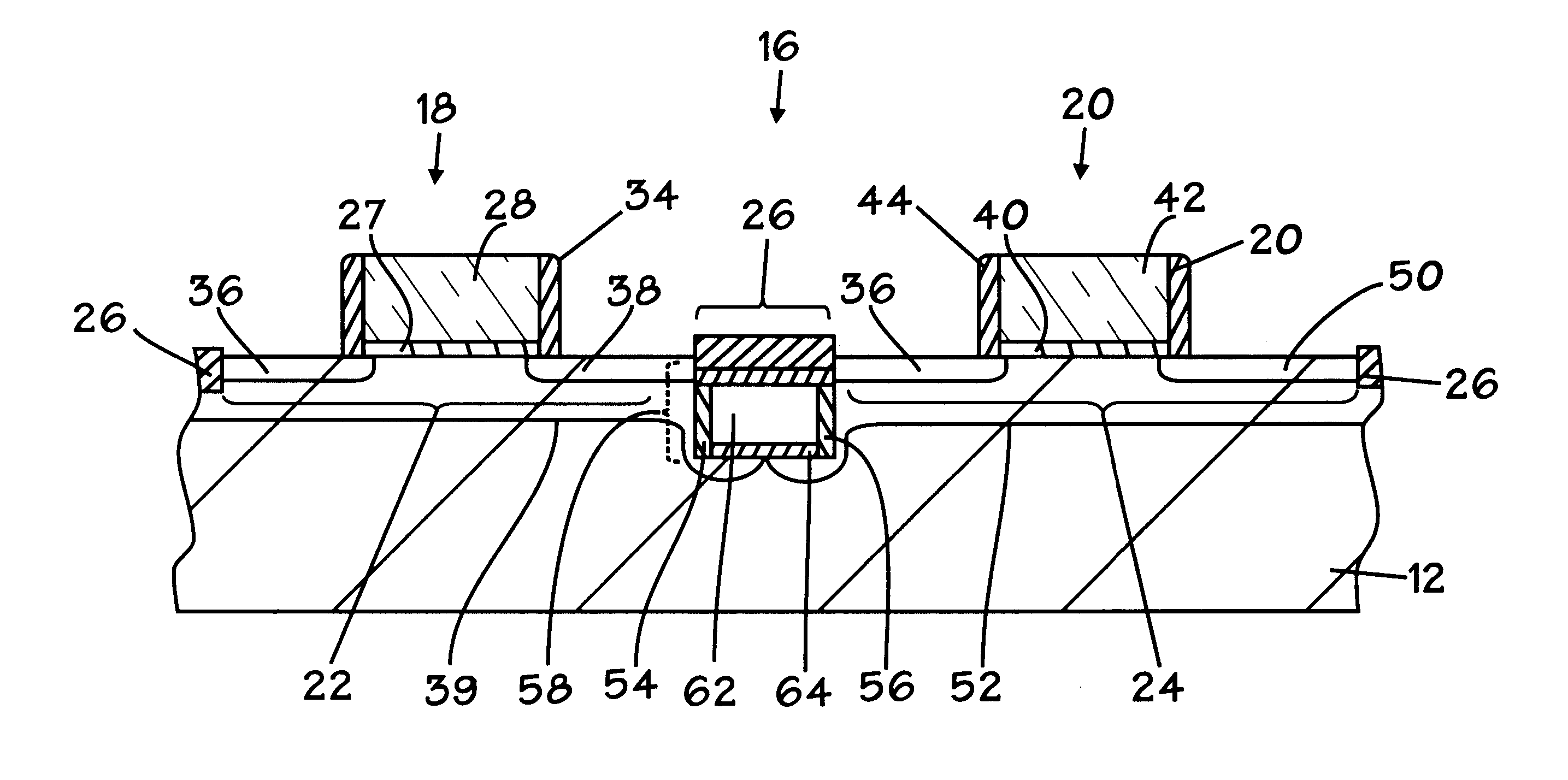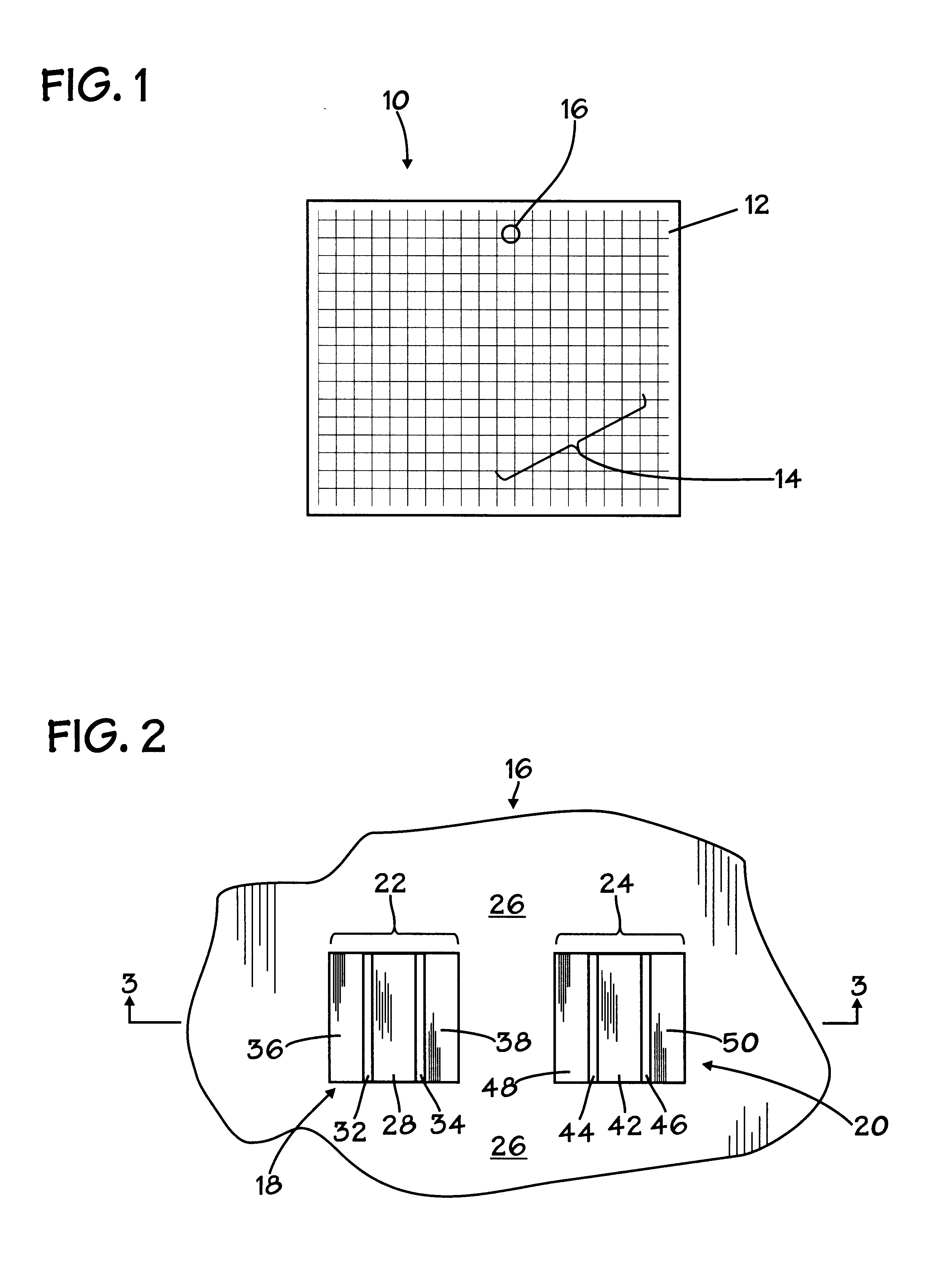Method of making air gap isolation by making a lateral EPI bridge for low K isolation advanced CMOS fabrication
a technology of lateral epi bridge and low k isolation, applied in the field of isolation structure, can solve the problems of bird's beak structure formation, substrate surface exposure, and difficult to achieve the effect of reducing the thickness of the device, and reducing the packing density of the device in the integrated circui
- Summary
- Abstract
- Description
- Claims
- Application Information
AI Technical Summary
Problems solved by technology
Method used
Image
Examples
Embodiment Construction
In the drawings described below, reference numerals are generally repeated where identical elements appear in more than one figure. Turning now to the drawings, and in particular to FIG. 1, there is shown a plan view of an exemplary embodiment of an integrated circuit 10 implemented on a semiconductor substrate 12. The substrate 12 may be n-doped silicon, p-doped silicon, silicon-on-insulator or other suitable substrate material. The integrated circuit 10 includes a plurality of circuit devices 14 that can include transistors, capacitors, resistors or the like. A very small portion of the integrated circuit 10 is designated 16 and is shown in a highly magnified plan view in FIG. 2. Various metallization and interlevel dielectric layers have been peeled away in FIG. 2 to reveal two exemplary circuit devices 18 and 20 that are formed on respective active areas 22 and 24 of the substrate 12. As used herein, the terms "formed on" or "disposed on" should be construed to include the possi...
PUM
 Login to View More
Login to View More Abstract
Description
Claims
Application Information
 Login to View More
Login to View More - R&D
- Intellectual Property
- Life Sciences
- Materials
- Tech Scout
- Unparalleled Data Quality
- Higher Quality Content
- 60% Fewer Hallucinations
Browse by: Latest US Patents, China's latest patents, Technical Efficacy Thesaurus, Application Domain, Technology Topic, Popular Technical Reports.
© 2025 PatSnap. All rights reserved.Legal|Privacy policy|Modern Slavery Act Transparency Statement|Sitemap|About US| Contact US: help@patsnap.com



